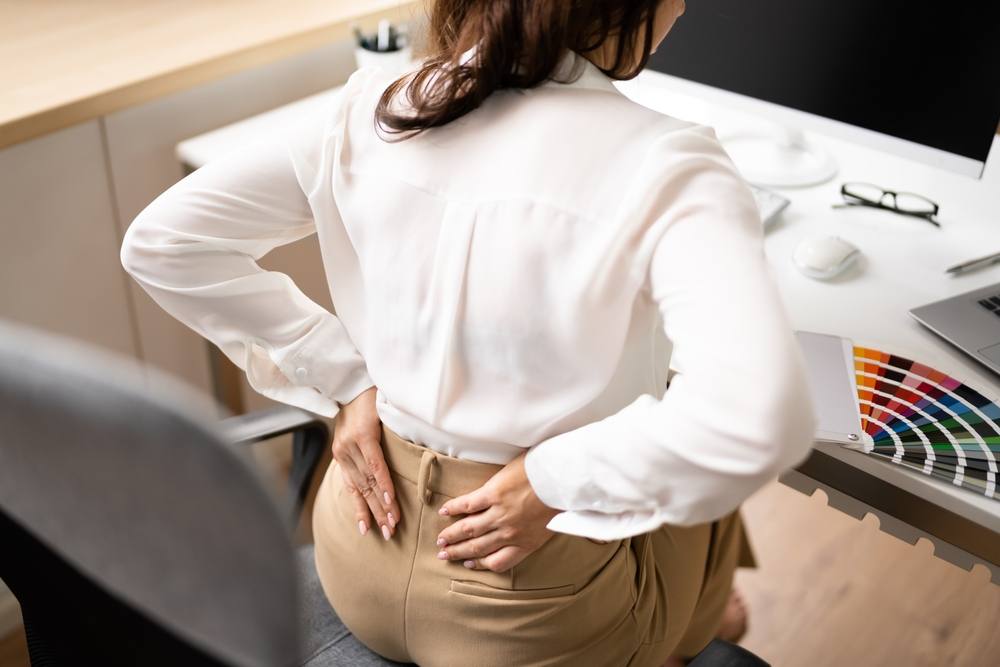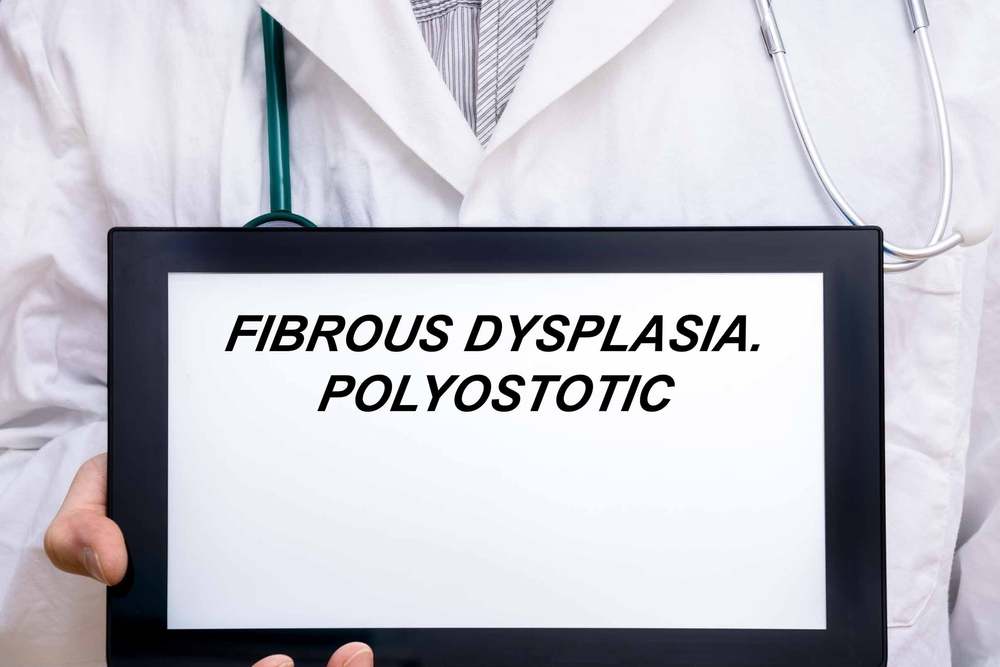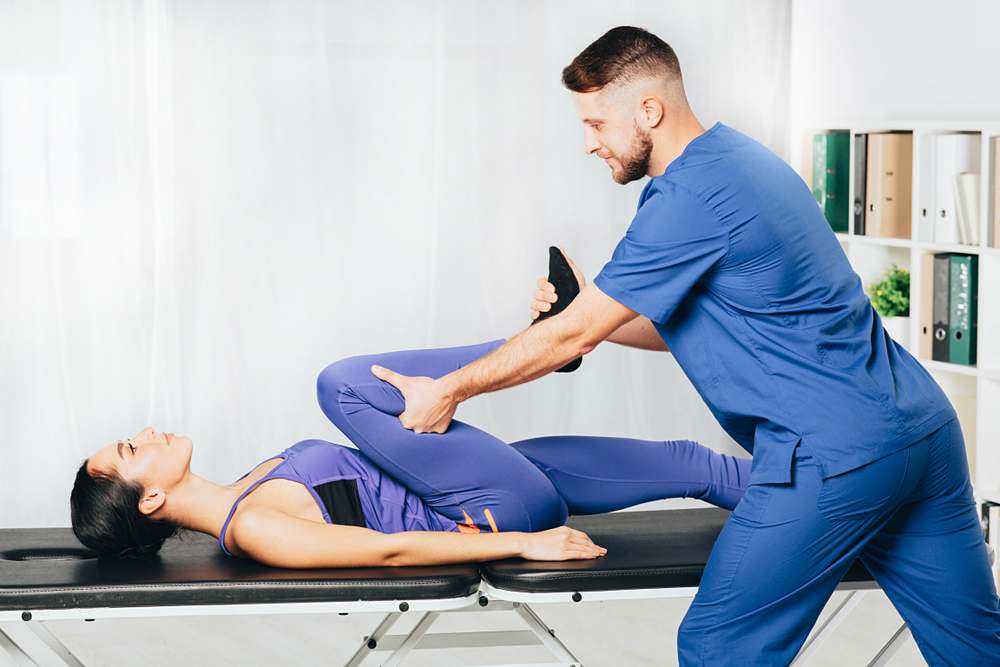 Your hips are two of the largest weight-bearing joints in the body. Each hip joint is a ball and socket joint designed to carry the weight of your body and support movement of the upper leg. The bones, cartilage, and soft tissues that make up the hip joint all work together to help you rotate your legs, twist, bend, and more. Sometimes you don’t realize just how much you rely on your hips for everyday movements and activities until you start experiencing pain. Hip pain can occur in the hip joint itself, or you may notice it around the pelvis, buttocks, and upper leg area. There are many reasons why women develop hip pain, from the stress of pregnancy and childbirth on the body to sudden injuries that impact the hip joint. If you were injured in an accident, then talk to your car accident doctor about your hip pain as soon as possible. The anatomy of the pelvis differs between men and women, so women can experience hip pain for different reasons than men. Here’s everything you need to know about common causes of hip pain in women.
Your hips are two of the largest weight-bearing joints in the body. Each hip joint is a ball and socket joint designed to carry the weight of your body and support movement of the upper leg. The bones, cartilage, and soft tissues that make up the hip joint all work together to help you rotate your legs, twist, bend, and more. Sometimes you don’t realize just how much you rely on your hips for everyday movements and activities until you start experiencing pain. Hip pain can occur in the hip joint itself, or you may notice it around the pelvis, buttocks, and upper leg area. There are many reasons why women develop hip pain, from the stress of pregnancy and childbirth on the body to sudden injuries that impact the hip joint. If you were injured in an accident, then talk to your car accident doctor about your hip pain as soon as possible. The anatomy of the pelvis differs between men and women, so women can experience hip pain for different reasons than men. Here’s everything you need to know about common causes of hip pain in women.
Anatomy of the Female Hip
One of the main differences between the male and female hip anatomy has to do with childbearing. The hips and pelvis of a woman have slightly different structures than men’s hips because they allow for pregnancy and childbirth. Hip pain is also more common in men than women. The hip joint is a ball and socket joint, where the top of the thigh bone, or femur, forms the ball of the joint, and the bones of the pelvis make up the socket. The top of the thigh bone is known as the head of the femur, and it fits into the socket with surrounding cartilage for cushion and support. A ball and socket joint allows for a wide range of movement, which is why your hips are so strong and flexible. Hip muscles support the joint and allow for movements like moving the leg forward, sideways, and rotating the leg. Ligaments and tendons of the hip connect bones and muscles together, while synovial fluids help lubricate the joint so it can move smoothly.
What Can Cause Hip Pain in Women
 Injury or issue with some aspect of the hip joint can lead to hip pain and other symptoms. Here are common causes of hip pain in women.
Injury or issue with some aspect of the hip joint can lead to hip pain and other symptoms. Here are common causes of hip pain in women.
Arthritis
Arthritis is one of the most common reasons for hip pain. The most common type of arthritis is called osteoarthritis, which occurs with general wear and tear on the body as you age. As the cartilage around the joint wears down, the ends of the bones start to lose protection. This can cause the bones to rub against one another, causing pain, stiffness, and inflammation. Osteoarthritis can occur at any age, though it is more common in older adults. The most common symptoms of osteoarthritis of the hip include joint pain, stiffness, and reduced range of motion. Arthritis in the hips can also cause a loss of flexibility and tenderness or discomfort when you touch the affected area. Some people who have hip arthritis notice crackling, clicking, or popping sounds when moving the joint, known as crepitus.
Dysplasia
When the hip socket doesn’t fully cover the ball of the femur, it is known as hip dysplasia. This condition can cause the hip joint to be more unstable, causing the joint to become partially or completely dislocated more easily. Many people who experience hip dysplasia have had the condition since birth. A soft brace can help address hip dysplasia in infants, but if the condition isn’t recognized at a young age, it can cause pain and discomfort later in life. Mild hip dysplasia may not get diagnosed in infancy but start to affect someone during growth spurts in their teenage or young adult years. Hip dysplasia can damage the cartilage in the hip joint, which can negatively impact the smooth motion of the joint. In teens and young adults, symptoms can include pain that gets worse with certain activities. The hip joint may feel unstable, and you may experience an increase in pain and discomfort when sleeping on the hip.
Tendonitis
Inflammation of tendons in and around the hip joint is known as tendonitis. You can develop tendonitis in the hips from something as seemingly simple as too much exercise. Sudden and intense activities that stretch and strain the soft tissues in your hips can lead to inflammation. The tendons that connect bones and muscles in your hips can become irritated after too much activity. Athletes can develop tendonitis in the hips from activities like running, bicycling, and swimming. You can also develop tendonitis from intense exercise classes. Hip pain from tendonitis may appear gradually, along with tenderness in the area. Pain and tenderness can develop into stiffness in your hips, making certain movements uncomfortable.
Bursitis
Another part of the hip anatomy includes bursae, which are fluid-filled sacs that provide cushion and reduce friction when the bones of the joint glide against one another. If one of the bursae near the hip joint becomes inflamed, it can lead to bursitis. A sudden hip injury or overuse can cause bursitis of the hip. Poor posture and misalignment in the lower back and hips can also lead to bursitis. You may notice pain and tenderness around the joints, which can feel sharp at first and then turn into a dull throb. Bursitis of the hip may also cause swelling, and your hip may feel warm to the touch.
IT Band Syndrome
Another cause of nagging pain in your hips can be IT band syndrome. The IT band refers to the iliotibial band that runs along the outside of your hips and down to your knee. This thick band of fibers supports movements of the upper leg and knee, like repeated bending movements with running or cycling. If the IT band gets too tight, it can cause pain along your side and swelling in the knee. Common symptoms include pain that starts along the outside of your knee, above the joint. This pain can creep up along the outside of your leg and aggravate the outside of your hips.
Hip Fracture
A hip fracture refers to a broken thigh bone near where the ball meets the socket of the hip joint. The ball part of the hip joint is the top of the femur, or thigh bone, and a break can occur to this part of the bone or right beneath. A hip fracture is a sudden injury that will typically cause severe pain and require immediate medical attention. Older adults are at higher risk for a hip fracture, especially if they already have an underlying condition like osteoporosis. Hip fractures can also lead to complications that require further medical intervention, like a higher risk for blood clots in the leg.
Sciatica
Sciatica refers to a specific type of pain that impacts the lower half of your body. Aggravation or injury to the sciatic nerve at the base of your spine can cause shooting pains that extend from your lower back through your hip and buttock and into your leg and foot. While the sciatic nerve is located in your lower back, it can lead to hip pain that can make sitting or standing in certain positions incredibly uncomfortable. If you have hip pain that isn’t explained by any of the other causes mentioned above, then sciatica could be the culprit.
Treating Hip Problems in Women
 Many hip problems in women can be treated with noninvasive or minimally invasive treatment options. In severe cases, surgery may be required to correct a hip injury. Talk to your doctor if you are experiencing hip pain that lasts for longer than a few days. Your Conyers orthopedic doctor or chiropractor can determine what is causing your pain and develop an appropriate plan to manage your discomfort and treat your condition. Here are examples of treatment for hip pain in women.
Many hip problems in women can be treated with noninvasive or minimally invasive treatment options. In severe cases, surgery may be required to correct a hip injury. Talk to your doctor if you are experiencing hip pain that lasts for longer than a few days. Your Conyers orthopedic doctor or chiropractor can determine what is causing your pain and develop an appropriate plan to manage your discomfort and treat your condition. Here are examples of treatment for hip pain in women.
Home Remedies
You can treat mild hip pain at home with over-the-counter medications for pain and inflammation. You may also try alternating ice and heat on the area. A cold compress will help reduce swelling and inflammation at the hip. Cold temperatures also restrict blood vessels and provide a temporary numbing sensation to relieve your pain. A warm compress or heating pad can help reduce tense or sore muscles in and around the hip. Heat applied to the area loosens tense muscles and improves circulation to the area. If exercise or activities contribute to your hip pain, then try taking a break from these and resting your hips. Giving your hip time to heal from overuse can help the pain go away within a few days.
Chiropractic Care
You can also visit your Conyers chiropractor to talk about what is causing your hip pain. Chiropractors utilize all-natural and non-invasive treatment techniques to help manage pain and restore healthy functioning in the body. Misalignments in the hip joint can contribute to your pain and discomfort. A chiropractor will perform a physical examination and locate the source of your pain and discomfort. They will then develop an individualized plan of care to address your specific symptoms and the root cause of your pain. Chiropractic adjustments can help restore healthy functioning in joints like the hip and help reduce inflammation and improve joint mobility. Your Conyers chiropractor can help you improve alignment in your lower back and spine, which may also be contributing to your hip pain and discomfort.
Physical Therapy
A physical therapist can also work with you to recover from a hip injury and restore strength and mobility to the area. Physical therapy involves a combination of stretches, exercises, and soft tissue mobilization to help you recover from an injury and manage pain. Your physical therapist can walk you through stretches to help improve strength and flexibility in the muscles and soft tissues that support your hip joint. After an injury, hip muscles can become weakened and lose their ability to effectively support your hips. Physical therapy exercises can help strengthen these areas so that your hips are better supported going forward. Soft tissue mobilization and other therapeutic techniques will also help you regain the range of motion in your hips.
Surgery
In severe cases, surgery may be required to address a hip injury. The most common surgical procedure that addresses hip pain is known as hip arthroplasty, or hip replacement surgery. Surgery for hip injuries or issues is typically only recommended when more conservative treatments have failed to manage pain, or in the event of a sudden, serious injury. Hip replacement surgery will typically include using artificial implants to replace worn-out or damaged sections of the ball and socket joint. Recovery from hip replacement surgery can take weeks or months, depending on the specific type of surgery and other factors, like your age. Physical therapy is common after a surgery like hip replacement to help you regain strength and mobility as you heal.
Treatment for your hip pain will depend on your diagnosis, and our team of doctors at AICA Orthopedics in Conyers is here to help. We work with women who experience hip pain for a wide variety of reasons and develop individualized treatment plans to help manage and reduce your pain. Our treatments don’t just target current pain; they also help you prevent pain from reoccurring in the future. At AICA Orthopedics, our team of doctors includes chiropractors, physical therapists, and orthopedic surgeons who will provide you with comprehensive treatment and care. We have X-rays, CT scans, and MRIs available in the office, so you can see your doctor and get the scans you need for a comprehensive diagnosis and treatment plan. Visit AICA Orthopedics in Conyers today if you are dealing with hip pain and experience for yourself the difference in our individualized approach to your treatment and care. We want you to get back to the activities you love without dealing with hip pain.
